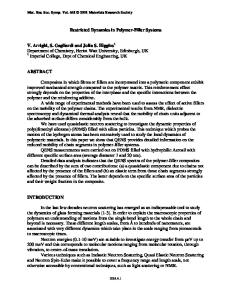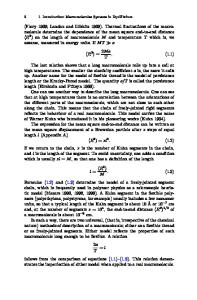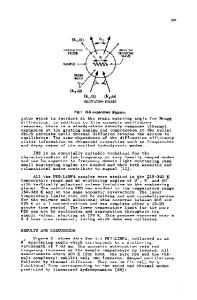Polymer Surface Dynamics
- PDF / 451,425 Bytes
- 4 Pages / 576 x 777.6 pts Page_size
- 63 Downloads / 384 Views
MRS BULLETIN/JANUARY 1996
come generalized. The literature in this area is now large. This review seeks to bring out the excitement of a few selected contributions. The reader is referred to the original literature for full accounts. The Slip Transition at the Polymer-Solid Interface Arguments have waxed and waned for many years concerning how a liquid meets and flows past a surface.4'5 Where does solidity end and fluidity begin? In practice, this means deciding whether liquid molecules adjoining the solid are stuck to it (more precisely: have zero velocity tangent to it) or slip. The former is called "stick." Most hydrodynamics, rheology, and materials-processing textbooks presently take the applicability of this boundary condition for fluid flow for granted. Theoretical models have been developed to describe the conditions under which a polymer liquid will slip past a solid.6'7 This slip can be viewed as a "fracture" between the surface and the liquid. The chance of this is enhanced if entanglements strengthen the linkages between chains in the bulk. Theories predict a shear-rate threshold above which molecules at the surface can no longer sustain the stress imparted by the bulk deformation. Much experimental evidence now supports this view. Perhaps the most elegant comes from the near-field velocimetry measurements of L. Leger and co-workers, based on fluorescence recovery after photobleaching with evanescent waves.8 Some earlier studies, formerly controversial,5 can now be regarded as prescient. The importance of this pioneering work was to forcefully pose the question that could not be ignored of whether the molecules stick or slip at the surface. The next generation of textbooks will change. Links will be made (one hopes) with the field of tribology, in which slippage phenomena have been proposed quite in-
dependently.910 Furthermore, slip can occur for small molecules also. Its prominence during spreading and coating is clear.11 It is even possible that the partial onset of slip can lead to a kind of chaotic rheology,1213 as illustrated in Figure 1. What's at the Surface? The reliable prediction of which species in a macromolecular mixture will segregate to a surface is important for a vast number of technological and biomedical problems (for example, lubricants, paints, foods, water purification, capillary-zone electrophoresis, and biomedical materials). If the species were atoms or small molecules, then the surface composition could be predicted based on relative free energies of interactions. However, the adsorption of high polymers is fundamentally different. Large conformational changes that accompany localization at the surface, intertwining of the chains, and crowding and pressing of polymer segments against one another very close to the surface all slow down motions and relaxations and the approach toward equilibrium. In this context it is not surprising that anomalously slow mobility has been found for spreading of molten polymer onto adsorbing solids,14 adsorption and desorption rates from solution
Data Loading...











